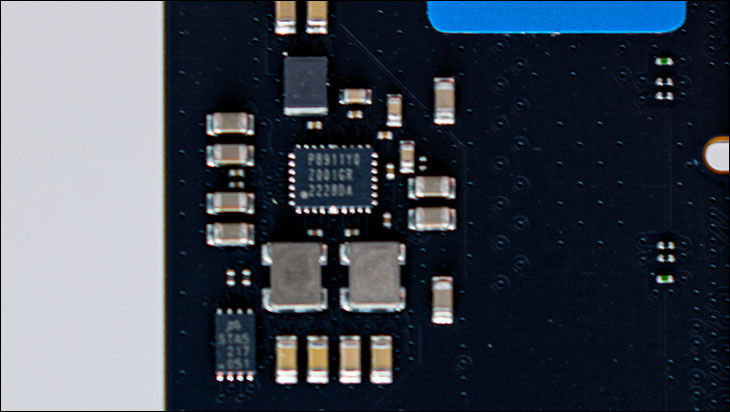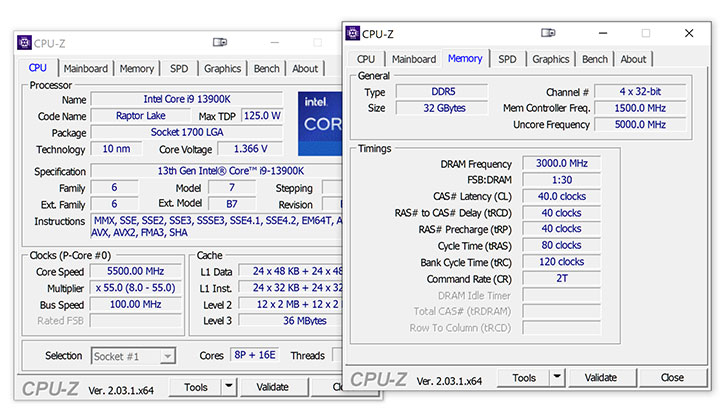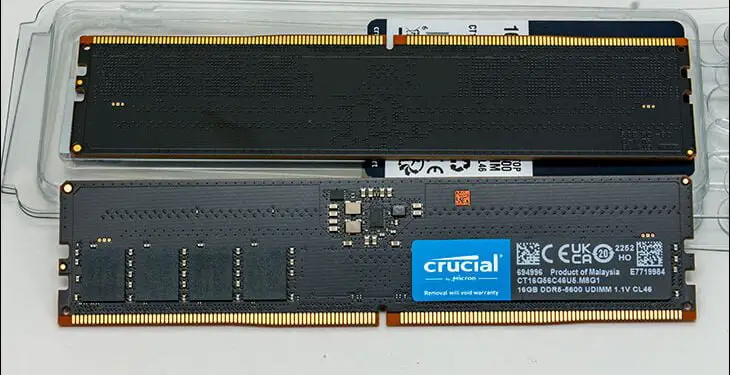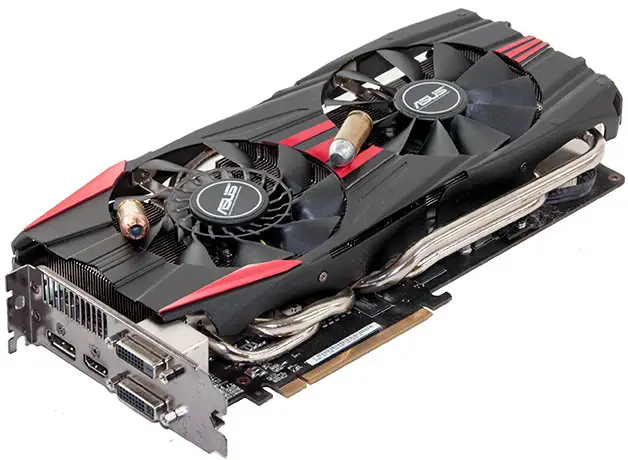
As stated in the primer section, DDR5 does not rely upon the motherboard to get the voltages right. Instead, it is each DDR5 stick’s job to take the nominal 5V (4.25 to 5.5v is acceptable as far as the onboard PMIC is concerned) and step that down to 1.1v (for example). Right now there are actually not many choices for PMICs and it appears that Crucial uses a couple different options… and it would not surprise us in the least to see different ones used in the same line. This does not matter. All are more than up to the task. In the case of our DDR5-5600 sample kit instead of a Anpec Electronics’ APW8502C PWM controller (as seen in the DDR5-5200 kit previously reviewed)… it uses the same PMIC as the DDR5-4800 kit: the Renesas P8911 controller. A controller known to be decent at handling DDR5 (at 1.1 to 1.2 voltage) demands.
Moving on.
As we went over in the DDR5-4800 and DDR5-5200 reviews, Micron are ultra conservative and do more factory testing than most. They know that most of the RAM ICs they sell as DDR5-4800 could easily pass ‘the other guys’ DDR5-5200 testing. They even know that many of the RAM ICs they sell as DDR5-4800 could easily pass ‘the other guys’ DDR5-5600 testing. They even know that a lot end up in the ‘other guys’ DDR5-6000 labeled models. All Micron/Crucial would have to do to match them is up the voltage. They have not, and probably will never do this… as anything above 1.1 volts is out of specification according to JDEC’s DDR5 Memory Specification (JESD79-5B).

With selling out-of-spec memory under their Crucial brand a no-go, Micron opted for the sensible solution of lowering the timings. This however is going to cause a ton of consumer confusion on what kit is optimal for a given build.
To easily ‘get’ who the 5600 kits are made for one simply needs to do a bit of math… or plug the numbers into an online latency calculator. For those who like kickin’ it old school the equation is: (2000 / Data Rate) X CAS latency. “Data Rate” is easy to figure out… it’s the numbers after “DDR5-“. AKA the ‘speed’ a kit is listed as being
For example, in Crucial’s DDR5-4800 CL40 kit’s case the equation is (2000/4800)x40 or (.4166666667)x40… or 16.67ns.
Crucial’s DDR5-5200 CL42 kit is (2000/5200)x42 or (.3846154)x42… or 16.15ns.
Lastly, but certainly not least, Crucial’s DDR5-5600 CL46 kit is (2000/5600)x46 or (.35714)x46… or 16.43ns.
As they say “Houston. We have a problem”. Unlike the DDR5-5200 which is clearly superior in both frequency and latency the DDR5-5600 kit has worse latency than the exact same priced DDR5-5200 kits. To be specific to match(ish) the ‘5200 kit, CL45 would have been needed. To make a clear and distinct trend of better performance between the models, with about .5ns improvement per step, Crucial would have had to gone for CL44.
They did not and it becomes “blatantly” clear that this is a kit not meant for average joes. It is mainly meant for experienced buyers. Be they system builders or experienced overclocking enthusiasts… buyers who know how to tweak things to get more than what they paid for. With that said, this is not a ‘bad’ kit. We seriously doubt that all but enthusiast’s toilet trained with a shotgun will ever notice an increase of 0.28ns. The human eye blinks at ~150ms… or 150000000ns. Which is 5.357 million times longer than the difference in latency between the ‘5200 and ‘5600 kits. Thus, its as close to a rounding error as it makes no nevermind.
For system builders who do not want to support overclocked builds… this kit can easily do CL45 at stock voltages. We have used five Crucial 5600 kits (albeit not necessarily this specific model kit) and they all could do that without messing with the stock 1.1voltage. That couple seconds worth of tweaking will get the latency below the ‘5200 kit. To be precise it gets it down to 16.07ns.

For overclocking enthusiasts, or even those who do not mind applying a smidgen of voltage, by turning the voltage slightly up to 1.12v (i.e. the same amount we applied to the 5200 kit) we got CL44 stable. Once again beating what the 5200 CL40 could do at 1.12v. To be precise the 5200 kit was CL40 stable or 15.38ns latency, while the 5600 is a straight 15ns latency. By upping the voltage to a moderate 1.25v we achieved a long-term stable DDR5-6000… at CL40. Thus, turning a 16.43ns latency penalty into a kit with only a 13.33 latency penalty. This however is a hard and fast limit to overclocking potential. Unlike, previous models trying higher voltages did not result in any improvements. Everything was unstable and failed to pass even basic stress testing.
On the plus side, this not only handily beats the best (long term stable) overclock we achieved with the ‘5200 kit (DDR5-5400 CL39 or 14.44ns… or a whopping 1.11ns difference) it turns a rather slow poke kit into one that is darn close to DDR4 latency levels. To be precise, that level of latency is darn close to a (once) common DDR4-3200 CL20 kit’s 12.5ns latency penalty. Just with all the extra performance that goes along with 6000MT/s and a functional equivalent(ish) of running it on a “quad channel” IMC… and all that for only a couple bucks more per kit than what DDR4-3200 2x16GB goes for today.
If all that was not enough to convince experienced buyers to think long and hard about this kit, DDR5-6000 is pretty much the ‘sweet spot’ for both AMD’s and Intel’s latest and greatest. Now before you stop reading and rush out and buy this kit of RAM we do need to properly set your level of expectations. We have used similar ‘5600 kits of Crucial DDR5 RAM in a handful of builds. Certainly not enough to call this a ‘golden’ kit we got for review… but it is the best results we have gotten from them. In our experience CL44 typically required 1.15 volts, and DDR5-6000 either required 1.3 to 1.35 volts to be stable at CL40… or leaving it at CL46 at 1.25 to 1.3v (best to worst overclockers). So, there is going to be some variability in your results. Not enough to ignore this kit, as 6K at CL46 is still decent at 15.33ns. Either way, if you do not mind a minor to moderate amount of tinkering/playing this is a kit that rewards your work with rather good rewards. Color us impressed.










